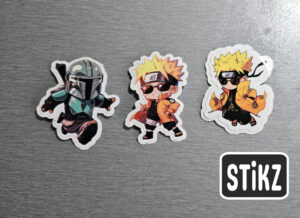A QSL card is a written confirmation of either a two-way radiocommunication between two amateur radio or citizens band stations; a one-way reception of a signal from an AM radio, FM radio, television or shortwave broadcasting station; or the reception of a two-way radiocommunication by a third party listener. A typical QSL card is the same size and made from the same material as a typical postcard, and most are sent through the mail as such.
QSL card derived its name from the Q code “QSL”. A Q code message can stand for a statement or a question (when the code is followed by a question mark). In this case, ‘QSL?’ (note the question mark) means “Do you confirm receipt of my transmission?” while ‘QSL’ (without a question mark) means “I confirm receipt of your transmission.”
History
During the early days of radio broadcasting, the ability for a radio set to receive distant signals was a source of pride for many consumers and hobbyists. Listeners would mail “reception reports” to radio broadcasting stations in hopes of getting a written letter to officially verify they had heard a distant station. As the volume of reception reports increased, stations took to sending post cards containing a brief form that acknowledged reception. Collecting these cards became popular with radio listeners in the 1920s and 1930s, and reception reports were often used by early broadcasters to gauge the effectiveness of their transmissions.[2]
The concept of sending a post card to verify reception of a station (and later two-way contact between them) may have been independently invented several times. The earliest reference seems to be a card sent in 1916 from 8VX in Buffalo, New York to 3TQ in Philadelphia, Pennsylvania (in those days ITU prefixes were not used). The standardized card with callsign, frequency, date, etc. may have been developed in 1919 by C.D. Hoffman, 8UX, in Akron, Ohio. In Europe, W.E.F. “Bill” Corsham, 2UV, first used a QSL when operating from Harlesden, England in 1922.
Usage in CB radio
CB radio enthusiasts often exchanged colorful QSL cards, especially during the height of CB’s popularity in the 1970s.[11] CB radio operators who met while on the air would typically swap personalized QSL cards which featured their names (“handles”) and CB callsigns.[12] Originally, CB required a purchased license and the use of a callsign; however, when the CB craze was at its peak many people ignored this requirement and invented their own “handles”.[13]
A simple card format might only include the users callsign and/or “handle”, home location, and note the date and time of a CB radio contact. More elaborate cards featured caricatures, cartoons, slogans and jokes, sometimes of a ribald nature.[12] As the CB radio fad grew in the U.S. and Canada, a number of artists specializing in artwork for CB QSL cards emerged.[14]
source : wikipedia





